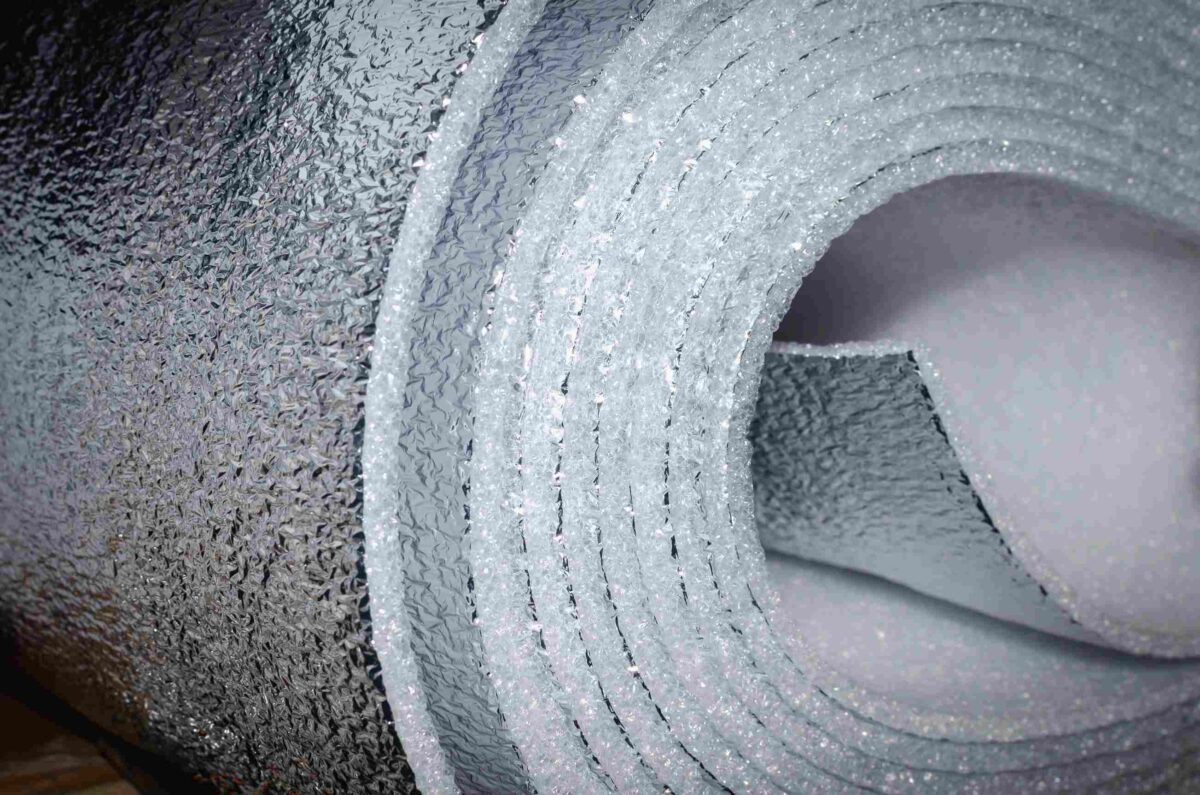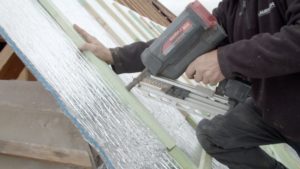What Makes a Good Insulation Material?

Selecting what makes a good insulation material goes beyond simply keeping a building warm or cool. It’s a crucial decision that impacts both a project’s initial budget and its long-term sustainability. High-performance insulation translates to reduced energy consumption, translating to lower utility bills and a smaller environmental footprint.
Key Characteristics of Effective Insulation Materials
Selecting the right insulation materials is vital for enhancing the thermal efficiency and durability of buildings. Although R-value is a commonly used indicator of insulation performance, a broader set of characteristics influences the overall effectiveness of insulation materials which also warrants attention.
R-value
R-value measures the thermal resistance of a material, indicating its capacity to slow heat flow. This property is essential for maintaining a stable indoor temperature throughout the year. However, the appropriate R-value depends on various factors, including climate, building design, and the specifics of wall construction. Following local building codes that set minimum R-value requirements ensures the energy efficiency of construction projects. Below is a summary of R-value recommendations for different climate zones as per the International Code Council (ICC):
- Very Cold: R-15
- Cold: R-13
- Moderate Cold: R-11
- Hot and Humid: R-3.8
- Marine: R-13
Thermal Conductivity
The k-value, or thermal conductivity, indicates how well a material conducts heat, with lower values signifying better insulation because they indicate slower heat transfer. Comparing insulation materials on this basis, those with a lower k-value are preferable for their superior thermal resistance. Standard insulation materials like fiberglass batts often have a k-value between 0.035 and 0.040 W/mK.
Durability and Longevity
The lifespan of insulation material impacts the long-term thermal performance of a building. The composition of the material, its exposure to moisture, and its ability to resist physical damage are all factors that affect durability. Choosing insulation materials designed to last under the conditions they will face is essential for maintaining energy efficiency over time.
Moisture Resistance
Water presence within insulation can reduce its R-value, encourage mold growth, and cause structural damage. Selecting materials that resist moisture or implementing vapor barriers to shield insulation from humidity is essential. This strategy preserves the insulation’s effectiveness and safeguards the health and safety of building occupants.
Innovations in Insulation
The evolution of insulation technology has made significant strides, transitioning from traditional, bulkier materials to advanced, performance-oriented solutions. This shift emphasizes materials that not only meet but exceed modern standards for energy efficiency, space utilization, and installation convenience. Enter Aluthermo Quattro Insulation, a paradigm of modern insulation technology. Aluthermo Quattro is an all-in-one solution, serving as insulation material, vapor barrier, and roof membrane. Its design incorporates four layers of aluminum multi-layer insulation, thermally welded to provide an exceptional barrier against heat transfer. With a thickness of just about 7/16 inch and the ability to reflect 96% of radiant heat, Aluthermo Quattro stands out for its thin, reflective, and radiant properties, ensuring optimal thermal performance in a fraction of the space required by traditional materials.
How to Choose the Right Insulation Material
When selecting insulation, it’s vital to consider a range of factors to ensure the material aligns with project requirements and sustainability goals. Here are key criteria to guide your choice:
- Performance: Assess the material’s ability to maintain thermal efficiency, considering factors beyond basic R-value, like thermal conductivity, and moisture resistance.
- Cost-efficiency: Evaluate the long-term savings a material offers in terms of energy costs, maintenance, and durability, rather than just the upfront expense.
- Environmental impact: Consider the ecological footprint of the insulation material, including its recyclability, the energy consumed in its production, and whether it’s made from renewable resources.
Aluthermo Quattro: Elevating Insulation Standards
Shifting the paradigm, Aluthermo Quattro Insulation brings forth a revolution in building technology, moving beyond the capabilities of traditional insulation materials. Its unique four-layer aluminum design, thin yet highly effective, delivers unparalleled heat reflection and thermal control in a compact package. QUATTRO’s standout features include exceptional durability, strong reflective power against radiant heat, superior air impermeability, and effective sound insulation, enhancing comfort and efficiency in any space.
Aluthermo Quattro versatility extends across various applications, proving ideal for cladding, exterior walls, roofs, and floors. Its easy installation, combined with its environmental friendliness and adaptability to both new builds and retrofits, makes it a smart choice for forward-thinking construction.
Discover the benefits of Aluthermo Quattro Insulation for your next project by contacting us today. Embrace the future of insulation technology here.


